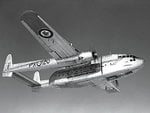B-17engineer
Colonel
On April 22,1943 16 Me-323 were flying over cape Bon Tunisia. They were interceped by 2 RAF fighter squadrons and 4 SOuth African Squadrons with KittyHawks. 14 of the 16 were shot down. They were filled with 240 tons of fuel for the Afrika Korps, out of the 140 crews 19 suvived. 4 days earlier the Luftwaffe lost 24 Ju-52's.
Me-323 Motorized Gigant
Why did the Luftwaffe give the ME-323 the fighter protection needed? It must have been a field day.
Me-323 Motorized Gigant
Why did the Luftwaffe give the ME-323 the fighter protection needed? It must have been a field day.


